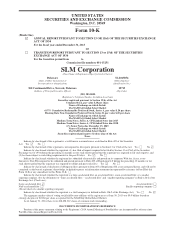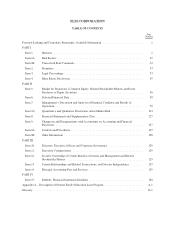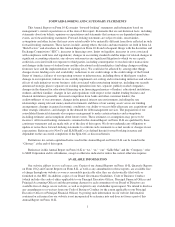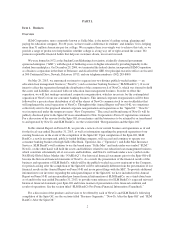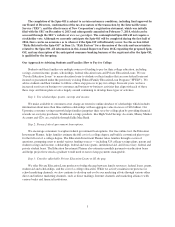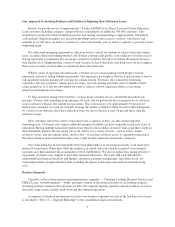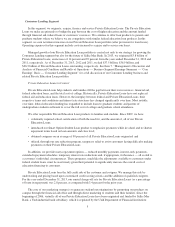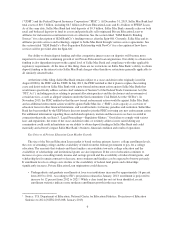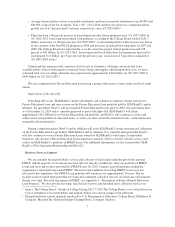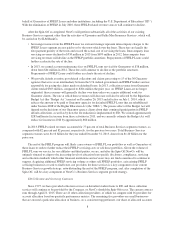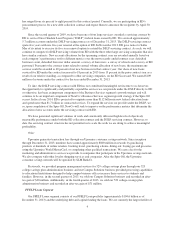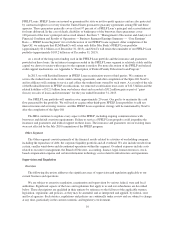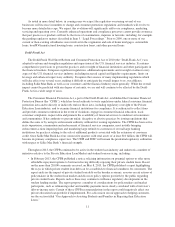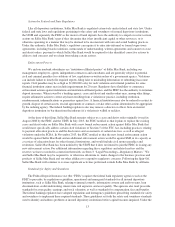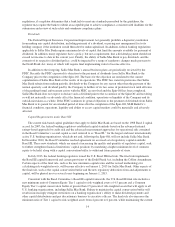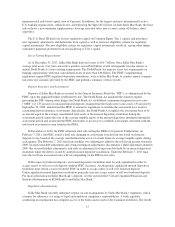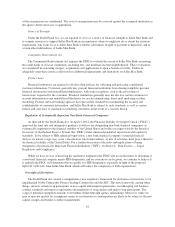Sallie Mae 2013 Annual Report Download - page 8
Download and view the complete annual report
Please find page 8 of the 2013 Sallie Mae annual report below. You can navigate through the pages in the report by either clicking on the pages listed below, or by using the keyword search tool below to find specific information within the annual report.
(“UDFI”) and the Federal Deposit Insurance Corporation (“FDIC”). At December 31, 2013, Sallie Mae Bank had
total assets of $10.7 billion, including $6.7 billion in Private Education Loans and $1.4 billion of FFELP Loans.
As of the same date, Sallie Mae Bank had total deposits of $9.3 billion. Sallie Mae Bank currently relies on both
retail and brokered deposits to fund its assets and periodically sells originated Private Education Loans to
affiliates for inclusion in securitization trusts or collection. See the section titled “SLM BankCo Funding
Sources” for a description of SLM BankCo’s funding sources after the Spin-Off. Currently, Sallie Mae and its
affiliates provide services and technology support to Sallie Mae Bank through various service agreements. See
the section titled “SLM BankCo’s Post-Separation Relationship with NewCo” for a description of how these
services will be provided after the Spin-Off.
Our ability to obtain deposit funding and offer competitive interest rates on deposits will become more
important to sustain the continuing growth of our Private Education Loan originations. Our ability to obtain such
funding is also dependent in part on the capital level of Sallie Mae Bank and compliance with other applicable
regulatory requirements. At the time of this filing, there are no restrictions on Sallie Mae Bank’s ability to obtain
deposit funding or the interest rates Sallie Mae Bank charges other than those restrictions generally applicable to
all similarly situated banks.
At the time of this filing, Sallie Mae Bank remains subject to a cease and desist order originally issued in
August 2008 by the FDIC and the UDFI. In July 2013, the FDIC notified us that it plans to replace the existing
cease and desist order on Sallie Mae Bank with a new formal enforcement action against Sallie Mae Bank that
would more specifically address certain cited violations of Section 5 of the Federal Trade Commission Act (the
“FTC Act”), including practices relating to payment allocation practices and the disclosures and assessments of
certain late fees, as well as alleged violations under the Servicemembers Civil Relief Act (the “SCRA”). In
November 2013, the FDIC notified us that the new formal enforcement action would be against Sallie Mae Bank
and an additional enforcement action would be against Sallie Mae, Inc. (“SMI”), in its capacity as a servicer of
education loans for other financial institutions, and would include civil money penalties and restitution. Sallie Mae
Bank has been notified by the UDFI that it does not intend to join the FDIC in issuing any new enforcement action.
For additional information regarding these and related regulatory matters and the reserves we have recorded in
connection therewith, see Item 3. “Legal Proceedings—Regulatory Matters.” Our failure to comply with various
laws and regulations, the terms of the cease and desist order, or to timely address issues raised during any
examination could result in limitations on our ability to obtain deposit funding in Sallie Mae Bank and could
materially and adversely impact Sallie Mae Bank’s business, financial condition and results of operations.
Key Drivers of Private Education Loan Market Growth
The size of the Private Education Loan market is based on three primary factors: college enrollment levels,
the costs of attending college and the availability of funds from the federal government to pay for a college
education. The amounts that students and their families can contribute toward a college education and the
availability of scholarships and institutional grants are also important. If the cost of education continues to
increase at a pace exceeding family income and savings growth and the availability of federal fund grants, and
scholarship levels remain constant or decrease, more students and families can be expected to borrow privately.
If enrollment levels or college costs decline or the availability of federal fund grants and scholarships
significantly increase, Private Education Loan originations could decrease.
• Undergraduate and graduate enrollments at four-year institutions increased by approximately 16 percent
from 2007 to 2011. According to ED’s projections released in January, 2013, enrollment is projected to
increase by 12 percent from 2012 to 2021.1While a clear trend has not yet been identified, recent
enrollment statistics indicate more moderate enrollment growth in the near term.
1Source: U.S. Department of Education, National Center for Education Statistics, Projections of Education
Statistics to 2021 (NCES 2013-008, January 2013)
6

